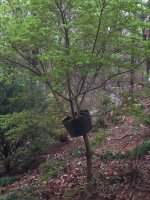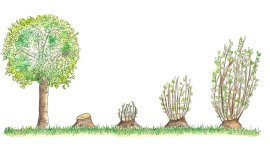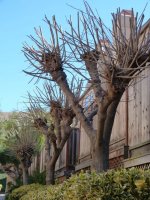Johnnyd
Shohin
I can't remember the book I got the idea from, but there was an illustration of Japanese bonsai growers developing there material starting from straight thick trunks. The idea of using the strength of an established tree to develop the next several sections over the course of a few years before layering off the new tree. The layers were about eye level for convenience, I assume. After the tree recovered they would repeat the process a little lower.
I decided to try it on a smaller established Chishio Japanese maple about 3 seasons ago and was happy with the results. Each section developed yearly and the scars from the previous years healed completely. I was able to direct growth easily to the top with light trimming on the lower section. If anyone knows the book and can reference the diagram please post it below.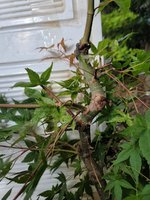
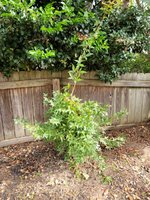
I decided to try it on a smaller established Chishio Japanese maple about 3 seasons ago and was happy with the results. Each section developed yearly and the scars from the previous years healed completely. I was able to direct growth easily to the top with light trimming on the lower section. If anyone knows the book and can reference the diagram please post it below.



